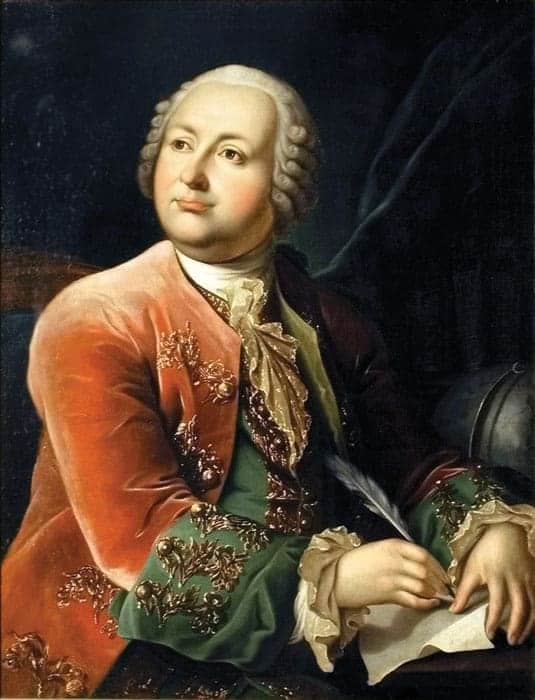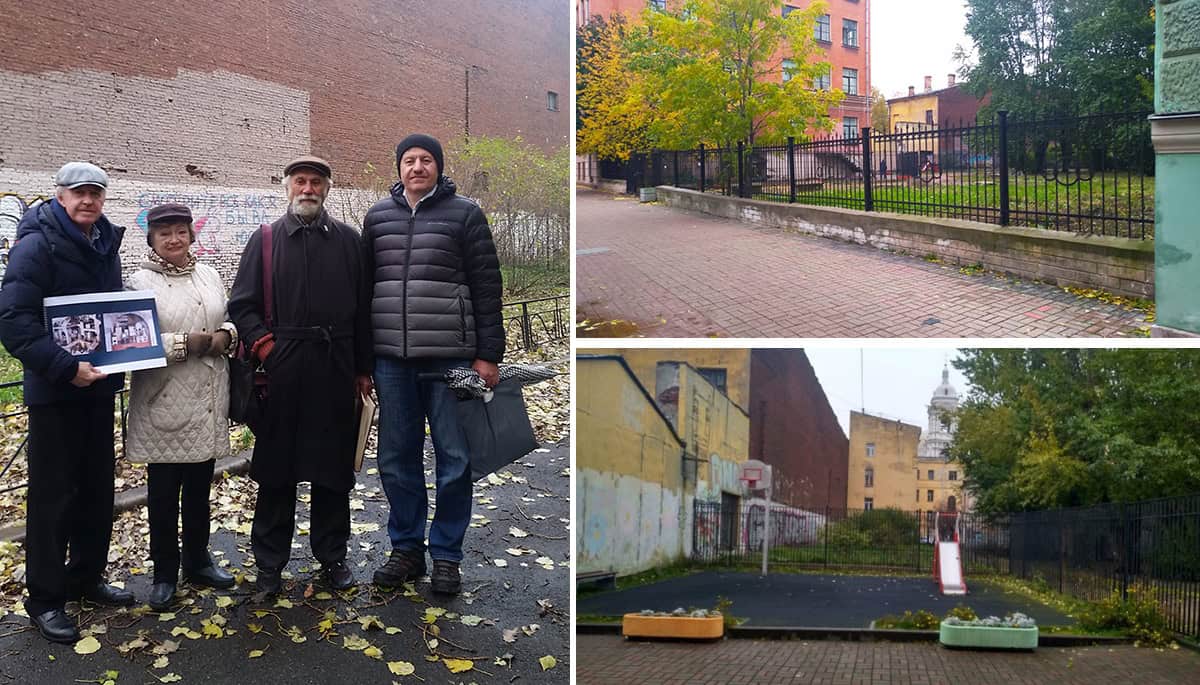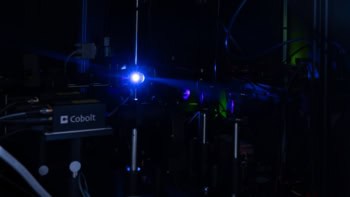We should not let the site of a lab in St Petersburg that spearheaded materials science more than 250 years ago be sold to developers, warns Robert P Crease

In the middle of one of the most expensive neighbourhoods in St Petersburg, Russia, is a vacant and poorly kept lot about half an acre in size. It’s been empty for years for a reason: on it stood the first scientific research laboratory in Russia – maybe even the world – and for over two and a half centuries generations of Russian scientists hoped to restore it. But its days as an empty lot may be over, for the land could soon be sold to the highest bidder.
The laboratory was the idea of Mikhail Lomonosov (1711–1765), Russia’s first scientist in the modern sense. Born in 1711 into a shipping family on an island in the far north of Russia, Lomonosov developed a passion for science that saw him study in Moscow, Kyiv and St Petersburg. He then moved to Germany, where he got involved in the then revolutionary, mathematically informed notion that matter is made up of smaller elements called “corpuscles”.

Mikhail Lomonosov: the greatest scientist you’ve never heard of
In 1741, at the age of 30, Lomonosov returned to Russia, where he joined the St Petersburg Academy of Science. There he began agitating for the academy to set up a physico-chemistry laboratory of its own. Until then, experimental labs in Russia and elsewhere had been mainly applied institutions for testing and developing paints, dyes and glasses, and for producing medicines and chemicals for gunpowder. But Lomonosov wanted something very different.
His idea was for a lab devoted entirely to basic research and development that could engage and train students to do empirical research on materials. Most importantly, he wanted the academy to run the lab, but the state to pay for it. After years of agitating, Lomonosov’s plan was approved, and the St Petersburg laboratory opened in 1748 on a handy site in the centre of St Petersburg, just a 20-minute walk from the academy, near the university, museums and the city’s famous bridges.
The laboratory was a remarkable place, equipped with furnaces, ovens, scales, thermometers, microscopes, grindstones and other instruments for studying materials
The laboratory was a remarkable place, equipped with furnaces, ovens, scales, thermometers, microscopes, grindstones and various other instruments for studying materials and their properties. Lomonosov and his students used these to analyse ores, minerals, silicates, porcelain, silicates, glasses and mosaics. He also carried out experiments with implications for fundamental theory.
In 1756, for instance, Lomonosov found that certain experiments involving the oxidation of lead carried out by the British chemist Robert Boyle were in error. Indirectly, Lomonosov also suggested a general law of conservation covering the total weight of chemically reacting substances. The law is, these days, usually attributed to the French chemist Antoine Lavoisier, who also came up with the notion three decades later. But Lomonosov’s work had suggested it.
A symbol for science
Lomonosov left the formal leadership of the laboratory in 1757, after which it was headed by several other academy professors. The lab continued to serve the academy’s research until 1793 when several misfortunes, including a flood and a robbery, led to it running down. Still, the lab has had huge significance as a symbol that Russian scientists have appealed to ever since as a model for more state support. It also inspired the setting-up of other chemical laboratories, including a similar facility built at Moscow University in 1755.
For the last two and a half centuries, however, the laboratory’s allies have struggled to keep the site from becoming just real estate in a pricey St Petersburg neighbourhood. In 1793 an academician bought the land from the Academy of Sciences and rebuilt the lab as housing, although preserving its foundations and the old walls. Over the next century, a series of private owners owned the plot, again rebuilding the laboratory and associated house.
The area was levelled again during the Siege of Leningrad in the Second World War, though the lab’s foundations remained intact. After the war, the Soviet Union tried to reconstruct the lab, as did the Russian Academy of Sciences. More recently, advocates have tried to rebuild the lab in time for the 300th anniversary of the Russian Academy of Science, which takes place in 2024–2025.

All these attempts have failed. Meanwhile, ownership of the site was passed around several Russian administrative agencies, most recently to the Russian State Pedagogical University. Last March, the university put the land in the hands of a private real estate agent who advertised the site in a public notice with the statement that the land was “intended for scientific facilities”, without reference to the lab. The plot is supposed to open for bids this fall.
But scientists and historians worry about the vagueness of that phrase and are distrustful of its source. There is nothing to stop the university from succumbing to the extremely high market prices that developers would pay for its enticing location in the centre of St Petersburg.
The critical point
Money, wrote Karl Marx in his famous article on the subject, is “the confounding and confusing of all natural and human qualities”. As he saw it, money strips what it is used for of ties to human life and meaning. Monetizing Lomonosov’s lab makes us speak of it quantitatively in real-estate terms. In such language, the site is simply a flat, featureless half-acre plot of land that, one metre down, has pieces of stone that were once part of an earlier building.
It also encourages us to speak of the history of this plot as just a series of owners, buildings and events. Some might even say that we have already preserved the history of Lomonosov’s lab because much of its surviving contents are on display in a nearby museum called the Kunstkamera (or art chamber). What, therefore, could be the harm of selling the land?
The land is where Lomonosov, his spirited colleagues and students, shared experiences and techniques, made friendships and established networks
Turning the history of science into nothing more than a tale of instruments promotes the view that science is all about clever individuals who use tools to probe the world for knowledge. But the places where scientists work are integral to science too. The plot of land on the 2nd avenue of Vasilevsky Island is where Lomonosov, his spirited colleagues and students, shared experiences and techniques, made friendships and established networks.
It’s where humans, instruments, materials and funding came together in dynamic events that revealed new knowledge of how materials behave in different conditions. The lab is also historically important because it impressed academy and state authorities enough that they continued to support scientific research as essential to Russia’s future.
Sure, appreciating this dimension of science history requires more than restoring buildings. But preserving the places where science happens keeps alive important symbols of what makes science possible, then and now, in a world that needs more of it. Selling the site of Lomonosov’s lab for money amounts to repudiating the cultural value of science.



